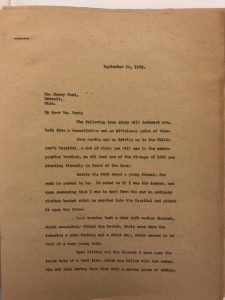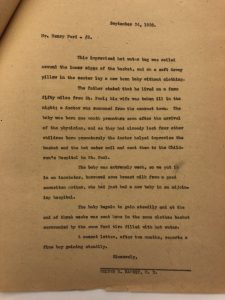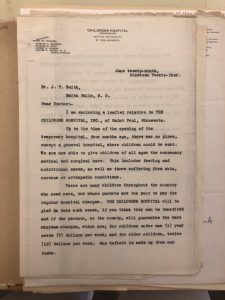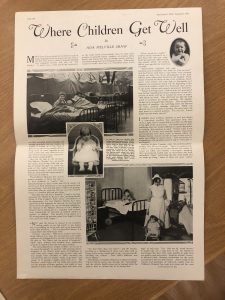for kids
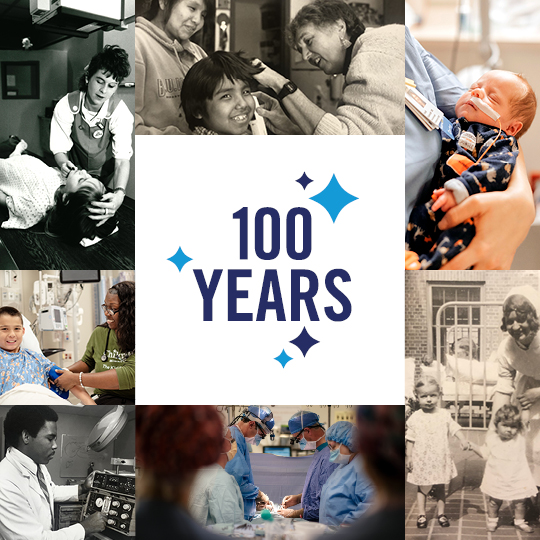
From the archives: Children’s Minnesota in the 1920s
The history of Children’s Minnesota is much more than buildings, names and dates. Who were the people behind the facts? What were their struggles and triumphs?
Every month, in honor of our 100th anniversary, we’ll share some compelling stories and artifacts from the Children’s Minnesota archives. Each month will feature a different decade. Here, we start with the 1920s.
The 1920s
The first Children’s Minnesota hospital opened in 1924 at the corner of Smith and Walnut in St. Paul. Today, that building is long gone. There’s a lot we’ll never know about what it was like to work and receive care there 100 years ago.
But thanks to the foresight of our early colleagues, interesting artifacts and stories from our first few years have been preserved. Here are some we found especially interesting.
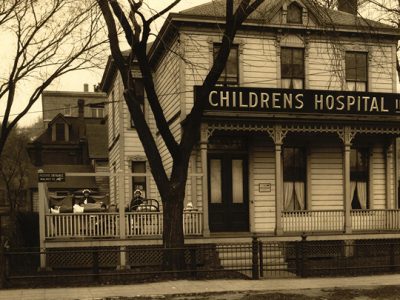
Ford tire helps save a baby’s life
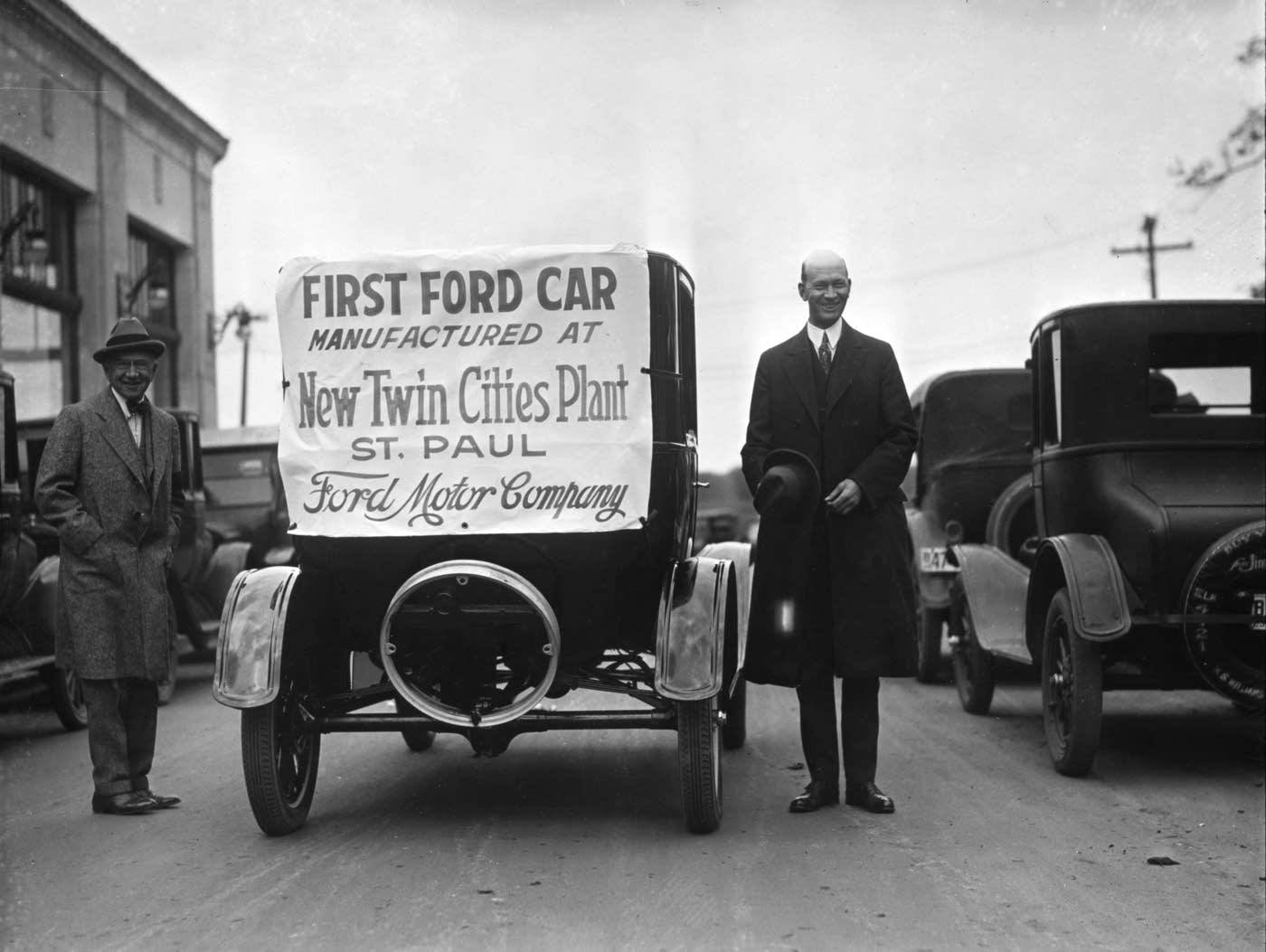
By January 1926, our first hospital had only been open for two years. Its founder, Dr. Walter Ramsey, and his staff were caring for kids from throughout Minnesota and surrounding states. And they were seeing some dramatic cases.
Dr. Ramsey thought one patient story might pique the interest of Ford Motor Company Founder Henry Ford, who had recently opened a car manufacturing plant in St. Paul.
Here’s a copy of the letter Dr. Ramsey sent Ford, recounting a heart wrenching story and its connection to the auto magnate.
Dr. Ramsey’s letter to Ford
September 24, 1926
Mr. Henry Ford
Detroit, Mich.
My dear Mr. Ford,
The following true story will interest you both from a humanitarian and an efficiency point of view.
Some months ago on driving up to the Children’s Hospital…an old Ford car of the vintage of 1920 was standing directly in front of the door.
Beside the Ford stood a young farmer, for such he proved to be. He asked me if I was the doctor, and upon answering that I was he took from the car an ordinary clothes basket which he carried into the hospital and placed it upon the floor.
Upon turning back a nice soft woolen blanket, which completely filled the basket, there came from the interior a warm feeling and a faint cry, which seemed to be that of a very young baby.
Upon lifting out the blanket I came upon the inner tube of a Ford tire, which was filled with hot water, the cut ends having been tied with a common piece of string.
This improvised hot water bag was coiled around the inner edges of the basket, and on a soft downy pillow in the center lay a newborn baby without clothing.
The father stated that he lived on a farm fifty miles from St. Paul; his wife was taken ill in the night; a doctor was summoned from the nearest town. The baby was born one month premature soon after the arrival of the physician, and as they had already lost four other children born prematurely the doctor helped improvise the basket and the hot water coil and sent them to the Children’s Hospital in St. Paul.
The baby was extremely weak, so we put it in an incubator, borrowed some breast milk from a good Samaritan mother, who had just had a new baby in an adjoining hospital.
The baby began to gain steadily and at the end of three weeks was sent home in the same clothes basket surrounded by the same Ford tire filled with hot water.
A recent letter, after two months, reports a fine boy gaining steadily.
Sincerely,
Walter R. Ramsey, M.D.
There’s no record that Ford responded. But hopefully he at least read the letter and was impressed by how his inner tube helped save a young life.
Spreading the word
You can’t have a hospital without patients.
So, Dr. Ramsey wrote to doctors across the Upper Midwest to spread the word about the new children’s hospital in St. Paul.
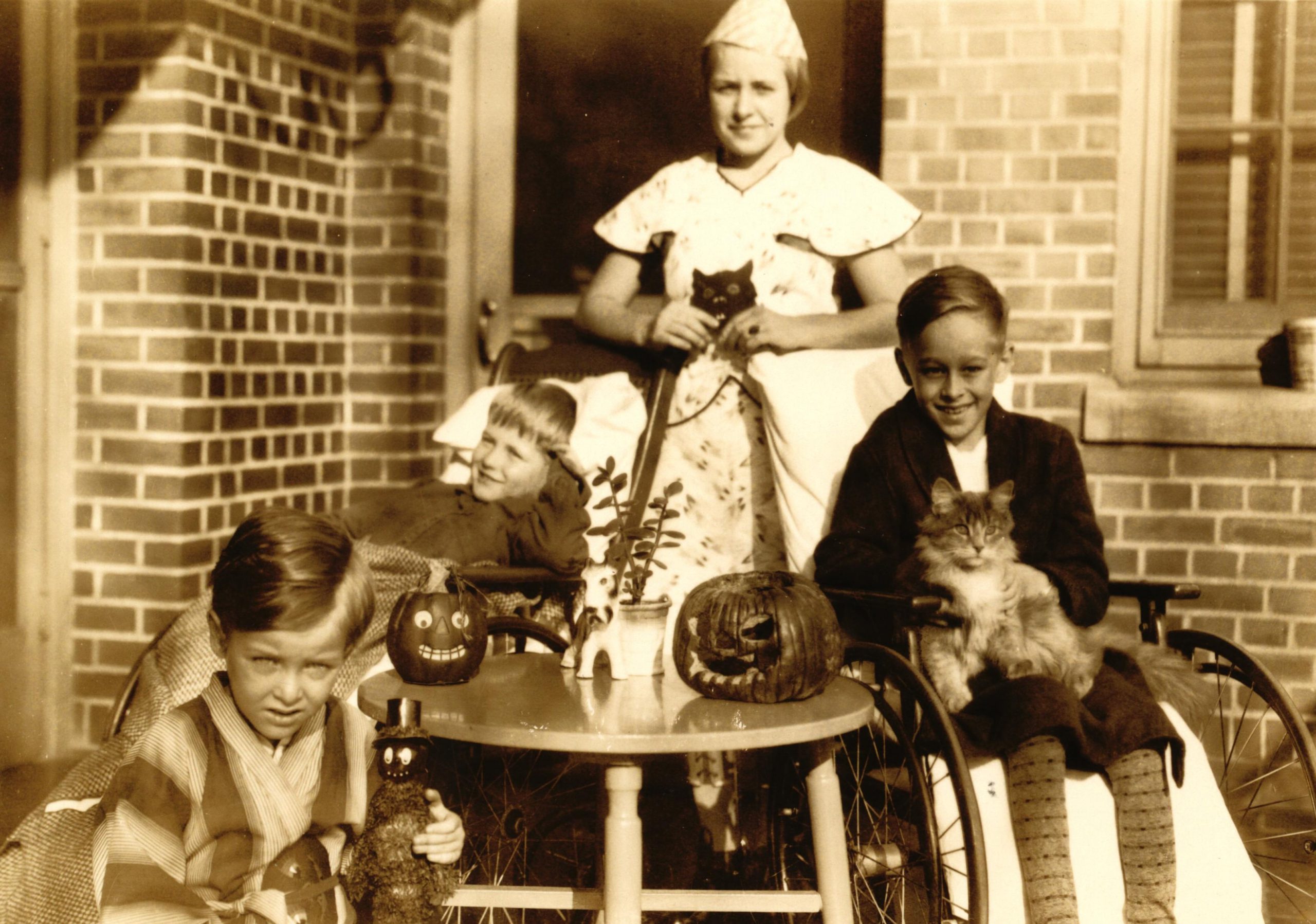
An appeal for patients
Below is an early example of one of his letters, which reveals the cost of services and a bit about our mission.
June 29, 1924
Dr. J. T. Smith,
Smith Falls, N.D.
Dear Doctor:
I am enclosing a leaflet relative to the Children’s Hospital, Inc., of Saint Paul, Minnesota.
Up to the time of the opening of the temporary hospital, four months ago, there was no place, except a general hospital, where children could be sent. We are now able to give children of all ages the necessary medical and surgical care. This includes feeding and nutritional cases, as well as those suffering from skin, nervous or orthopedic concerns.
There are many children throughout the country who need care, but whose parents are too poor to pay the regular hospital charges. The Children’s Hospital will be glad to take such cases, if you think they can be benefited and if the parents, or the county, will guarantee the bare minimum charges, which are: for children under one year, seven dollars per week; and for older children, twelve dollars per week. Any deficit is made up from our funds.
“This does not look like a hospital”
Dr. Ramsey also spread the word about the new children’s hospital through the media.
In the 1925 article below, a reporter from a national magazine called “The Farmer’s Wife” recounts her visit. She remarks how the outside of the hospital looked more like a home (which it had been). She then provides a somewhat detailed glimpse inside.
Please note: Some language used in this article to describe some medical conditions is considered offensive today.
The full article can be found on the Minnesota Digital Newspaper Hub.
Excerpt
Excerpt from “Where Children Get Well,” A Farmer’s Wife, Sept. 1925 issue:
The old fashioned bay window is filled – as you see in the good photograph we secured – with growing plants; bouquets of cut flowers make spots of brightness to catch baby eyes; canary birds sing in their cages and toys dangle from crib-sides or jollily surround the convalescents who are almost “ready to go home” and appear to be having a mighty good time of it. The furniture – small chairs and low tables and screens that are like pictures of flower gardens – was made to meet children’s dainty love of alluring shape and color, and on the walls, whole picture-books have let loose their wonders in adorable friezes – borders – of animals, birds, flowers and fairies that look as though merely waiting a summons to drop down to waiting playmates. If harmony makes for health, then here is a “healthful place to be!
Dr. Ramsey wrote a regular column for The Farmer’s Wife magazine for many years. It was a great way for him to educate parents around the country about issues relating to children’s health.
Stay tuned to our From the Archives blogs! Next month we’ll feature the 1930s and how we weathered the Great Depression.
Celebrating a century of care: Children’s Minnesota turns 100
Children’s Minnesota has been here for 100 years. And it’s all because of you: the people who bring your kids here, the ones who work here, the partners who refer their young patients for specialty treatment, the donors who support us, and the community who rallies around the families in our hospitals. Join us in celebrating a century of care — and a bright, healthy future for Minnesota kids.
